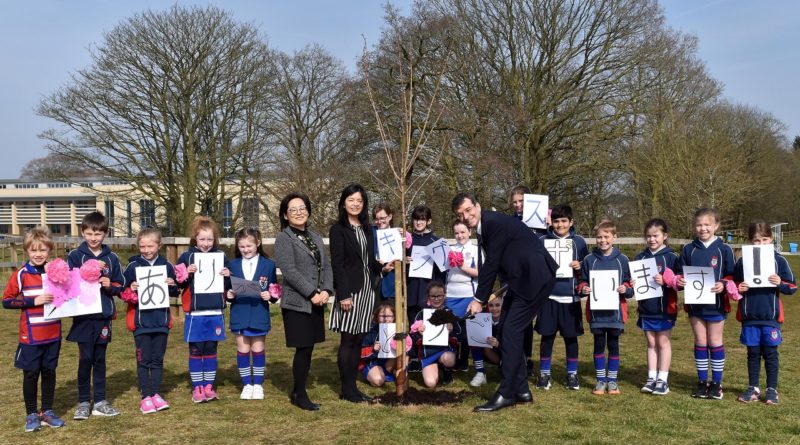Japanese Cherry Tree is Planted in Macclesfield
The blossoming relationship between the UK and Japan was celebrated by the planting of an ornamental cherry tree donated to the King’s School by the Japanese Embassy.
King’s School began offering Japanese language teaching in 2006, initially in a lunch-time club established by former teacher Atsuko Koido, and now has some 48 students aged from Year 3 to Year 13 in special clubs, formal classes and project work mastering the ancient oriental language. Such has been the success of Japanese teaching at King’s, that now under language teacher Emi Tamai, who took over in 2018, numbers are set to increase significantly next year.
The Sakura Project Cherry Tree Project was conceived in 2017 by the countries’ two former prime ministers, Theresa May and Shinzo Abe, to mark 150 years of UK – Japan friendship. Since then over 7,000 cherry trees have been planted nationwide.
King’s Head of Modern Foreign Languages Ian Dalgleish, who initiated King’s Japanese teaching programme 16 years ago, said: “There is an old Japanese saying, ‘The frog in the well never sees the ocean’ and if we want the next generation to look beyond Macclesfield, beyond Cheshire, beyond the U.K., beyond Europe and discover the world, then we must equip them for that journey of exploration.”
Emi Tamai explained that learning Japanese was much simpler than many might imagine, especially if students are introduced at as early an age as possible. “The grammar is much more simple with a more straightforward order of words. There are no plural articles and no feminine and masculine denominations. It’s just a very simple language to learn.”
Despite Emi’s assertion of its simplicity, she added: “Students, however, must still learn three different alphabets, with two of the alphabets each containing 46 characters, along both pictorial and phonic systems, and the third alphabetrepresenting specialist imagery.”
Emi added that, over the last 20 years, people in the UK had become more aware of Japanese culture and that the British were, indeed, more culturally diverse than people in her own native country. “British children have grown up with terms like Pokémon, Judo, Sushi and Karaoke, and are therefore more receptive to Japanese terminology and not so fearful of a new language.”






